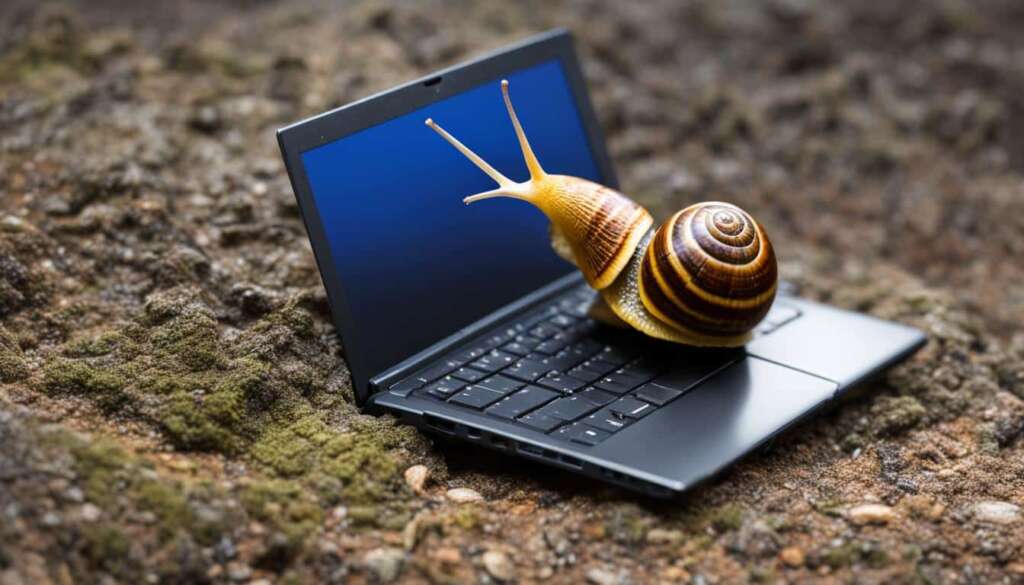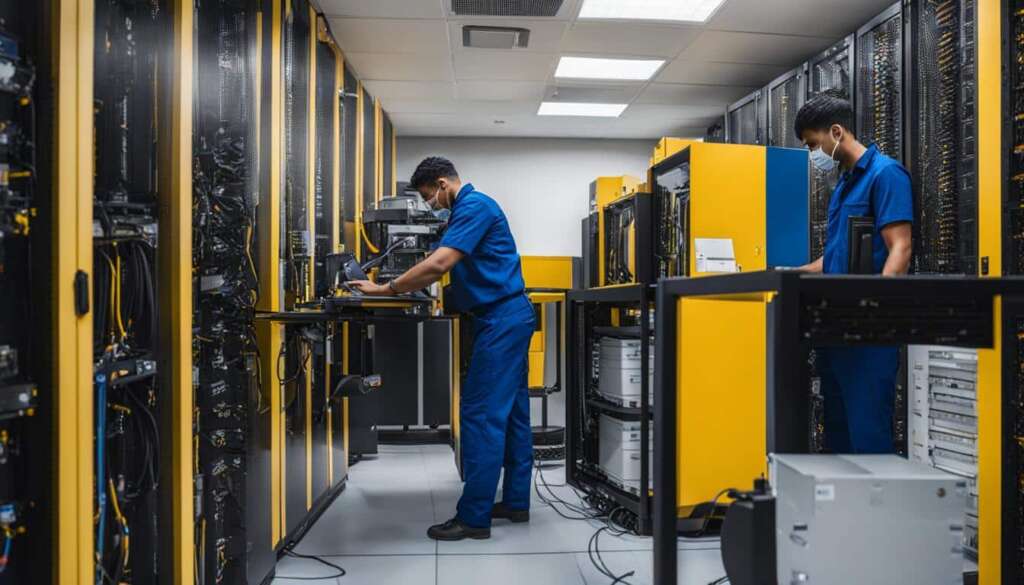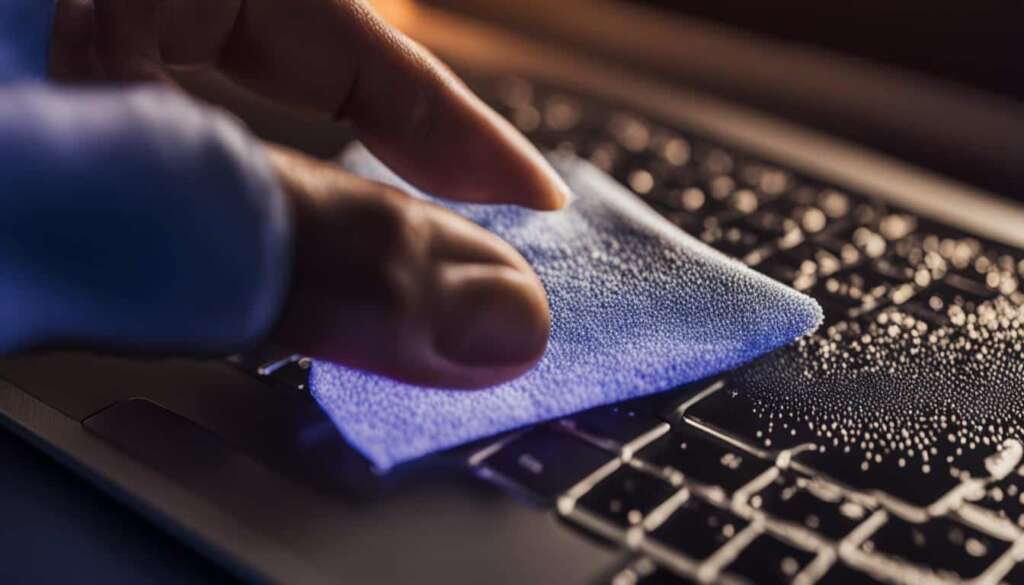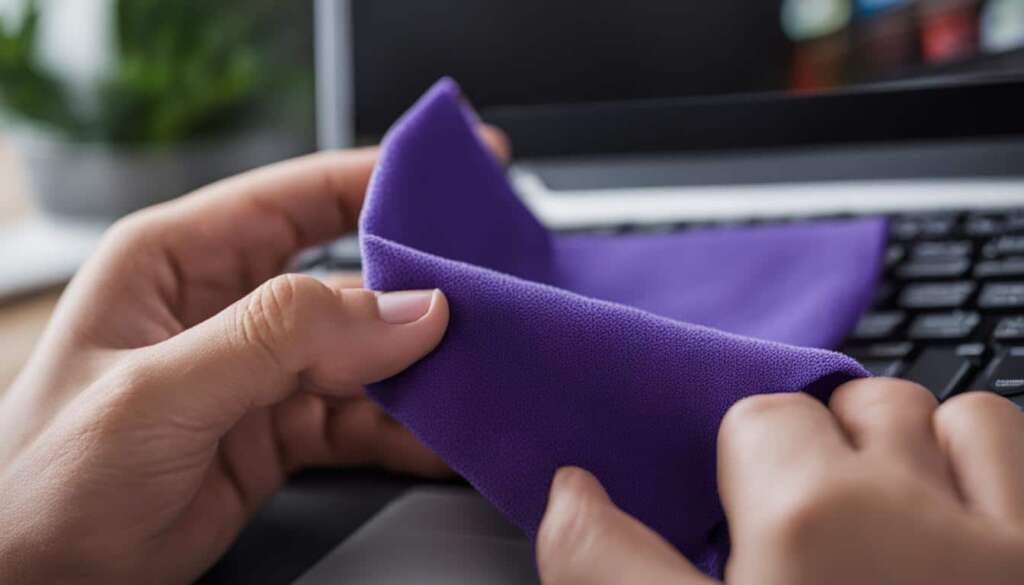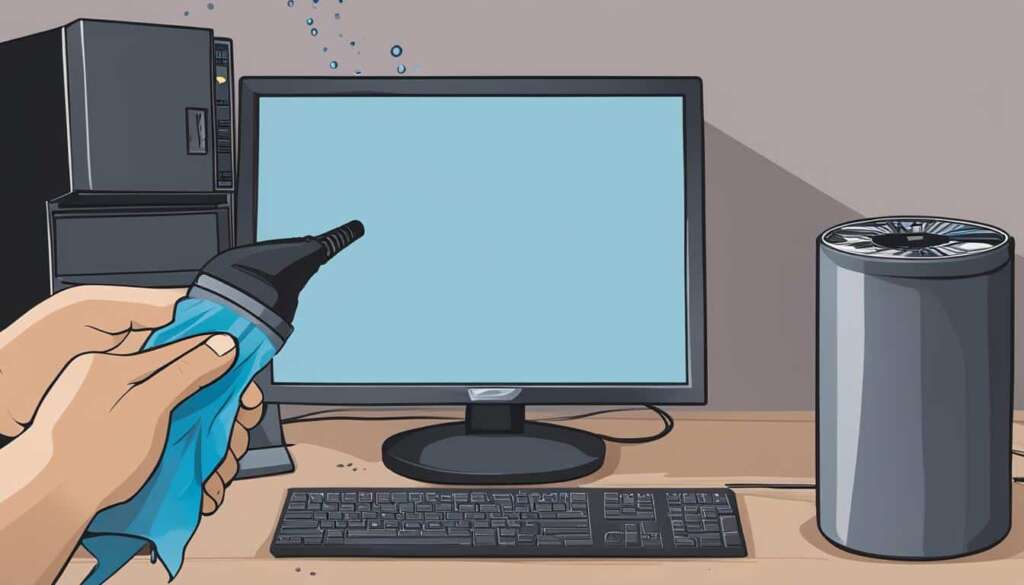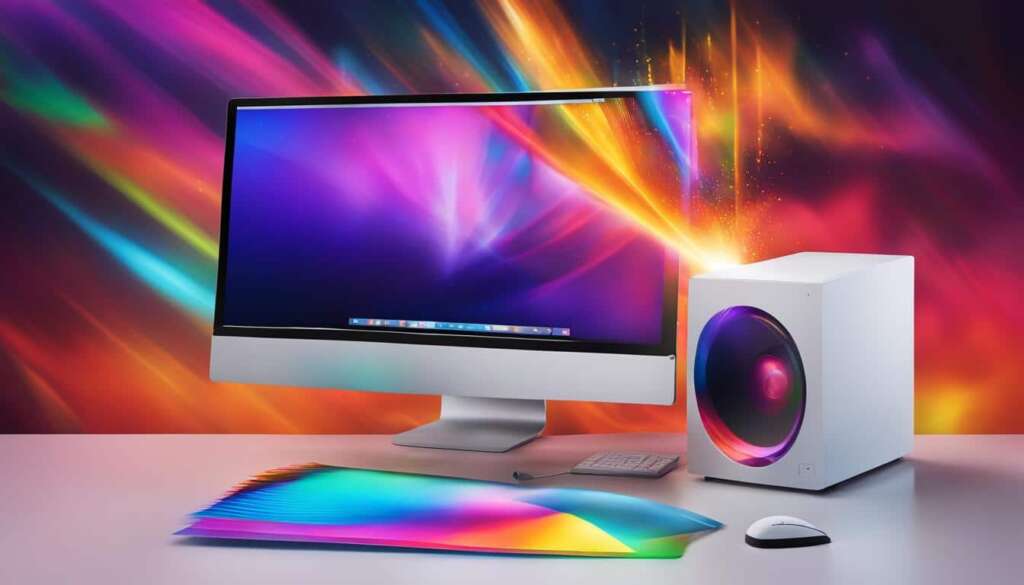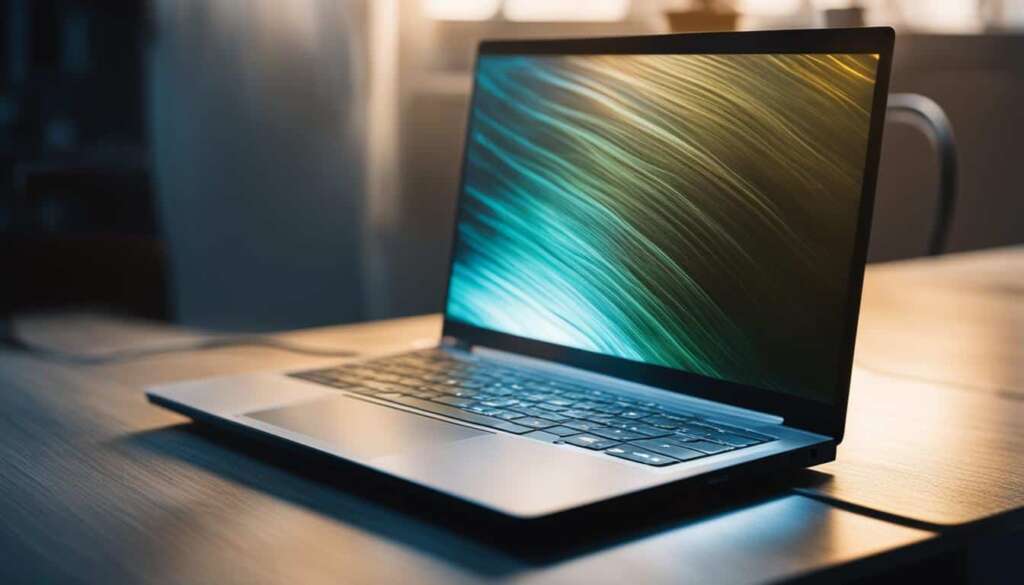Table of Contents
Is your laptop feeling sluggish and unresponsive? Are you tired of waiting for it to boot up or switch between browser tabs? Before you consider buying a new laptop, there are several steps you can take to improve the performance of your current device. In this article, we will explore the reasons why your laptop may be slow and provide strategies to address this issue effectively.
There’s nothing more frustrating than a slow laptop that hinders your productivity. The constant delays and lag can hinder your workflow and make simple tasks seem arduous. But fear not, there’s a solution! By understanding why your laptop is slow, you can take actionable steps to improve its performance and revitalize your computing experience. Say goodbye to long boot-up times and hello to a snappy, efficient laptop that matches your pace.
Common Causes of a Slow Laptop
Is your laptop running slower than usual? There are several common factors that can contribute to a slow laptop and diminish its performance. By identifying these causes, you can take targeted steps to improve your laptop’s speed and efficiency.
- Accumulation of startup applications: Over time, your laptop may accumulate numerous startup applications that launch automatically when you turn on your device. These background processes can consume valuable system resources and slow down your laptop’s performance.
- Slow Internet connection: A weak or unreliable Internet connection can lead to slow browsing speeds and hinder the performance of online applications and services. If you consistently experience sluggish internet speeds, it can impact your overall laptop performance.
- Insufficient RAM: Random Access Memory (RAM) plays a crucial role in your laptop’s performance. If your laptop has insufficient RAM to handle your workload or the software you use, it can lead to slowdowns and responsiveness issues.
- Full hard drive: When your laptop’s hard drive is nearing its maximum capacity, it can significantly impact its performance. A full hard drive can result in slower file access times, longer boot-up processes, and reduced overall speed.
- Outdated system drivers: System drivers are essential software components that enable communication between your laptop’s hardware and operating system. Outdated or incompatible drivers can lead to performance issues and cause your laptop to run slower than expected.
- Need for a Windows update: Keeping your operating system up to date is essential for optimal performance. Windows releases regular updates that include bug fixes, security enhancements, and performance improvements. Neglecting to update your laptop can contribute to sluggishness and reduced efficiency.
To effectively address a slow laptop, it is crucial to identify and tackle these common causes. In the next section, we will provide you with tips and strategies to improve your laptop’s performance and overcome these issues.
Tips for Speeding Up Your Laptop’s Performance
When it comes to improving your laptop’s performance, sometimes all you need is a simple restart. Shutting down your laptop and turning it back on can do wonders to refresh the system and boost its speed. By implementing this quick tip, you can see a noticeable improvement in laptop performance.
However, restarting your laptop is just the beginning. There are several other strategies you can employ to further enhance its performance. Here are a few additional tips to speed up your laptop:
- Regularly clean up your hard drive by deleting unnecessary files and programs. This will free up valuable storage space and improve the overall speed of your laptop.
- Improve startup time by disabling unnecessary startup applications. These applications can slow down your laptop’s boot-up process and consume system resources.
- Keep your operating system and software up to date. Updates often include performance enhancements and bug fixes that can positively impact your laptop’s speed.
- Consider upgrading your laptop’s hardware, such as increasing the amount of RAM or replacing your hard drive with a solid-state drive (SSD). These hardware upgrades can provide a significant performance boost.
- Scan your laptop for malware and viruses regularly. Malware and viruses can slow down your laptop and compromise its performance. Use reputable antivirus software to ensure your laptop is protected.
By implementing these tips, you can significantly improve your laptop’s performance, enhancing its speed and overall efficiency. Don’t let a slow laptop slow you down. Take action today and experience the difference a faster and more responsive laptop can make.
Optimizing Your Laptop for Speed
In addition to the tips mentioned earlier, there are several optimization techniques you can implement to further enhance your laptop’s speed. By fine-tuning specific settings and performing routine maintenance, you can optimize your laptop’s performance and unlock its full potential.
Reduce Visual Effects and Animations
Visual effects and animations can consume valuable system resources and contribute to a sluggish laptop. By reducing these visual elements, you can allocate more power to essential tasks and improve overall performance. To adjust these settings:
- Right-click on the Windows Start button and select “System.”
- In the left-hand menu, click on “Advanced system settings.”
- Under the “Performance” section, click on “Settings.”
- Select the “Adjust for best performance” option or manually disable specific visual effects to suit your preferences.
Maximize Power Settings
Adjusting power settings can help optimize your laptop for maximum performance. By prioritizing performance over energy efficiency, you can ensure that your laptop operates at its best. To adjust power settings:
- Click on the battery icon in the taskbar.
- Select “More power options.”
- Choose the “High performance” power plan or customize the power settings to fit your needs.
Disable Unnecessary Windows Features
Windows includes various features and services that may not be essential to your workflow. Disabling unnecessary features can free up system resources and improve performance. To disable Windows features:
- Press the Windows key + R to open the Run dialog box.
- Type “appwiz.cpl” and press Enter.
- In the Programs and Features window, click on “Turn Windows features on or off” on the left-hand side.
- Uncheck the features you want to disable and click OK to save the changes.
Perform Disk Cleanup and Defragmentation
Over time, your laptop’s hard drive may become cluttered with unnecessary files and fragmented data, impacting performance. Regularly performing disk cleanup and defragmentation can help optimize your hard drive and improve overall speed. To perform disk cleanup:
- Press the Windows key + R to open the Run dialog box.
- Type “cleanmgr” and press Enter.
- Select the drive you want to clean up and click OK.
- Check the file types you want to remove and click OK to start the cleanup process.
To defragment your hard drive:
- Press the Windows key + R to open the Run dialog box.
- Type “dfrgui” and press Enter.
- Select the drive you want to defragment and click on “Optimize.”
By implementing these optimizations, you can squeeze out every bit of performance from your laptop and enjoy a smooth and efficient computing experience.
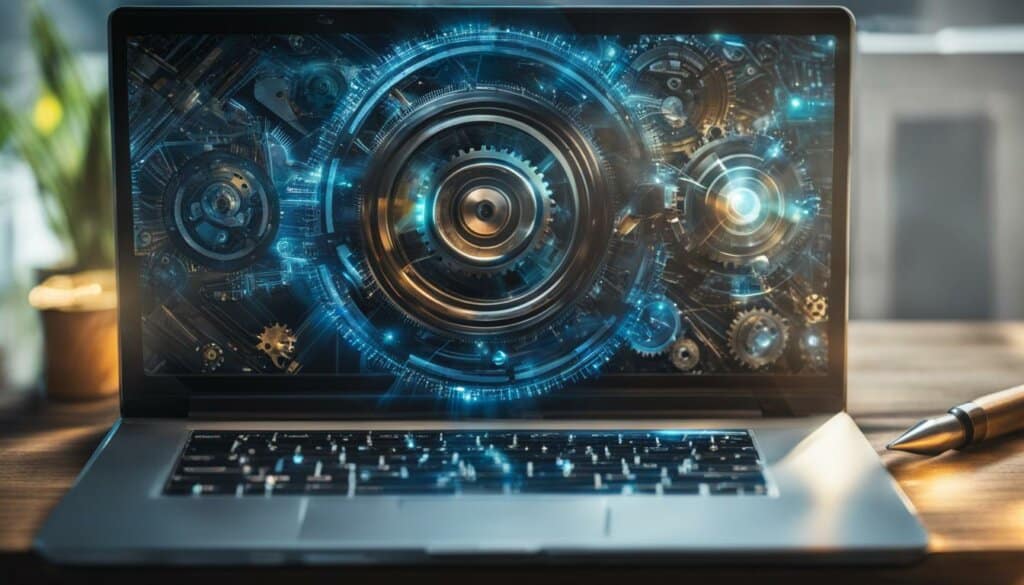
Task Manager: Your Performance Monitoring Tool
Task Manager is a powerful built-in tool in Windows that allows you to monitor and optimize your laptop’s performance. With Task Manager, you can keep a close eye on crucial system resources, identify resource-hungry processes or applications, and take necessary actions to enhance your laptop’s speed and efficiency.
Through Task Manager, you can monitor the CPU, RAM, and network usage of your laptop, providing valuable insights into how these resources are being utilized. By understanding which processes or applications are hogging system resources, you can make informed decisions to improve performance.
The CPU tab in Task Manager displays real-time information about the usage of your laptop’s processor. It shows the percentage of CPU usage, allowing you to identify any processes that may be consuming excessive CPU resources. By closing or managing these resource-intensive processes, you can alleviate the strain on your laptop’s CPU and improve overall performance.
The Memory tab shows detailed information about the RAM usage on your laptop. It highlights the processes and applications that are consuming the most memory, helping you identify potential memory leaks or resource-hungry programs. By managing these processes and optimizing your RAM usage, you can free up memory and ensure smoother multitasking.
The Network tab provides insights into your laptop’s network usage. It displays the network activity of each application, allowing you to identify any programs that are consuming excessive bandwidth or causing network congestion. By prioritizing critical applications and managing bandwidth usage, you can optimize your laptop’s network performance.
Task Manager also offers additional functionality that can assist in troubleshooting and optimizing your laptop’s performance. The Performance tab provides a graphical representation of your laptop’s CPU, memory, disk, and network usage over time, allowing you to identify any spikes or anomalies. The Startup tab shows the applications that launch automatically when your laptop starts up, enabling you to disable unnecessary startup programs and reduce boot time.
When it comes to monitoring and improving your laptop’s performance, Task Manager is an invaluable tool that empowers you to take control. Whether you need to close resource-hungry processes, optimize memory usage, or manage startup applications, Task Manager provides the necessary insights and tools to enhance your laptop’s speed and efficiency.
So, the next time you find your laptop running slow, don’t panic! Instead, open Task Manager and let it guide you towards a faster and more optimized computing experience.
Unlocking Performance with Task Manager
| Benefits of Task Manager | How to Use Task Manager |
|---|---|
| Monitor CPU, RAM, and network usage | Open Task Manager by pressing Ctrl + Shift + Esc |
| Identify resource-hungry processes | Navigate through the different tabs to explore system performance |
| Close unnecessary applications | Manage startup programs to improve boot time |
| Optimize memory usage | View performance graphs for real-time usage statistics |
| Monitor network activity | Take control of your laptop’s performance with ease |
Antivirus and Startup Apps: Potential Performance Bottlenecks
Antivirus programs play a vital role in protecting your laptop against malware and threats. However, they can also have a significant impact on your laptop’s performance, particularly during system scans. The comprehensive nature of these scans can consume valuable system resources, leading to slower overall performance.
To minimize the performance impact of antivirus software, consider scheduling scans during non-peak usage times. This allows the scans to run in the background without interrupting your work or leisure activities. Additionally, adjusting the settings of your antivirus program to reduce the scan intensity can further optimize your laptop’s performance.
Remember: Regularly updating your antivirus software ensures that it remains effective against emerging threats, but be mindful of the impact these updates may have on your laptop’s performance. Schedule updates during times when you can afford to allocate system resources for this task.
Another common factor that can slow down your laptop’s startup time is the presence of excessive startup applications. These are programs that launch automatically when you turn on your laptop. While some startup apps are necessary for certain functions or services, many may not be essential for your everyday computing needs.
To optimize startup performance, take the time to review the list of startup applications on your laptop. Identify any unnecessary or redundant apps and disable them from launching at startup. This simple action can significantly reduce the time it takes for your laptop to boot up and become fully operational.
Note: Disabling startup apps does not remove them from your laptop; it merely prevents them from launching automatically. You can still access and use these apps whenever you need them.
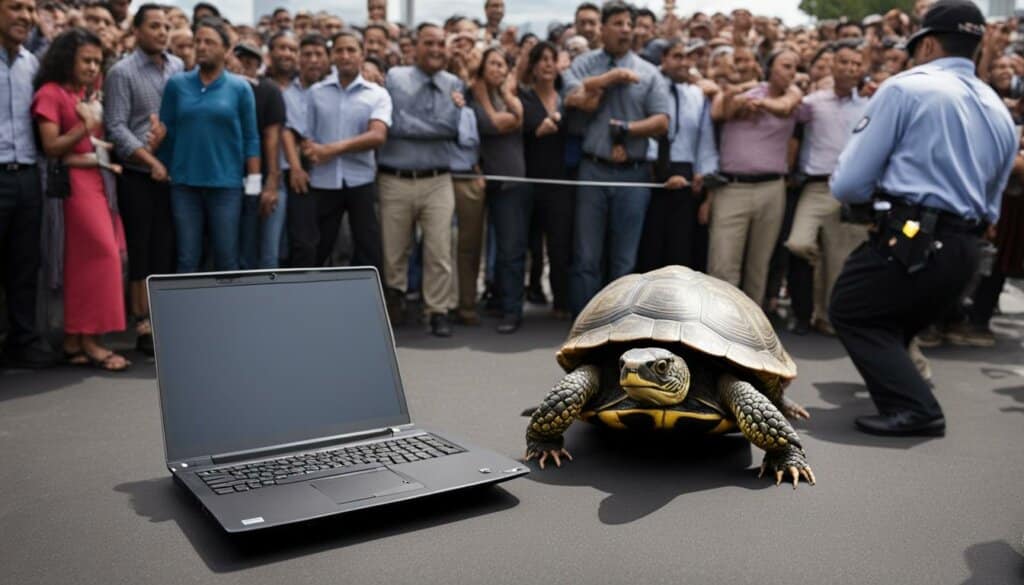
Startup Apps and Laptop Startup Time
| Startup App | Impact on Startup Time |
|---|---|
| Microsoft Office | High |
| Spotify | Medium |
| Adobe Creative Cloud | High |
| Steam | Low |
| Discord | Low |
Reviewing and disabling unnecessary startup apps not only speeds up your laptop’s startup time but also helps conserve system resources, leading to improved overall performance. Remember to prioritize essential apps and services and only disable those that are truly non-essential.
By being mindful of the impact of antivirus software and controlling your startup applications, you can optimize your laptop’s performance and ensure smooth and efficient operation.
Improving Browser Performance
Web browsing is an essential part of our daily lives, but it can become frustrating when our browser slows down and hampers our productivity. If you frequently find yourself waiting for pages to load or experiencing laggy browsing sessions, it may be time to optimize your browser for enhanced performance.
Web browsers, especially when loaded with numerous tabs and extensions, can contribute to a slow laptop. Each open tab consumes system resources, such as memory and processing power, which can degrade overall performance. To improve browser performance, consider the following tips:
- Limit the number of open tabs: Each open tab adds to the burden on your laptop’s resources. Close any tabs that you’re not actively using.
- Close unused tabs: It’s easy to accumulate a large number of open tabs while browsing. Take a moment to close tabs that are no longer needed to free up resources.
- Consider using a lightweight browser: Some web browsers, such as Google Chrome and Mozilla Firefox, are known for their resource-intensive nature. Consider trying lightweight alternatives like Opera or Brave, which prioritize speed and efficiency.
- Regularly clear your browsing history and cache: Over time, your browser’s history and cache can become bloated, impacting performance. Clearing these temporary files can free up resources and improve overall browsing speed. Access the settings menu of your browser and locate the options to clear your history and cache.
By implementing these strategies, you can optimize your browser’s performance and enjoy a smoother web browsing experience. Remember to periodically reassess your browsing habits and keep your browser tidy by closing unnecessary tabs. Your laptop’s overall performance will thank you!
Improving browser performance is crucial for enhancing your web browsing speed and overall laptop performance.
Conclusion
Working with a slow laptop can be incredibly frustrating, but there is hope. By implementing the tips and techniques discussed in this article, you can optimize your laptop’s performance and enhance your productivity. Whether it’s optimizing startup apps, managing system resources, or upgrading hardware if necessary, these strategies can breathe new life into your laptop and provide you with a faster, more efficient computing experience. Don’t be quick to give up on your current laptop – try these fixes before considering a new purchase.
Remember the importance of optimizing your laptop’s startup apps to minimize unnecessary processes running in the background. By managing system resources effectively, you can ensure that your laptop is utilizing its full potential. And if needed, upgrading your hardware can result in a significant boost in performance. With these fixes, you can transform your slow laptop into a speed machine that keeps up with your demands.
So, say goodbye to slow laptop woes and hello to a new level of productivity. Implement these strategies, optimize your laptop’s speed and performance, and get ready to experience a smoother computing journey. It’s time to unleash the true power of your laptop and make every task a breeze. Take control of your laptop performance today!
FAQ
Why is my laptop so slow?
There can be several reasons why your laptop is slow, including an accumulation of startup applications, a slow Internet connection, insufficient RAM, a full hard drive, outdated system drivers, and the need for a Windows update.
How can I improve my laptop’s performance?
To improve your laptop’s performance, you can try the following strategies: restart your laptop, reduce visual effects and animations, adjust power settings for maximum performance, disable unnecessary Windows features, run a disk cleanup, defragment your hard drive, monitor CPU, RAM, and network usage with Task Manager, schedule antivirus scans during non-peak usage times, review and disable unnecessary startup applications, limit the number of open tabs and extensions in your web browser, and regularly clear your browsing history and cache.
How does Task Manager help in improving laptop performance?
Task Manager is a built-in Windows tool that allows you to monitor CPU, RAM, and network usage, identify resource-hungry processes or applications, and close them to improve performance. It serves as a powerful tool for troubleshooting and optimizing your laptop’s performance.
Can antivirus programs and startup apps affect laptop performance?
Yes, antivirus programs, especially during system scans, can significantly impact your laptop’s performance. To minimize this impact, schedule scans during non-peak usage times or adjust scan settings. Excessive startup applications can also slow down your laptop’s boot time. Review your startup app list and disable unnecessary ones to optimize startup performance.
How can I improve browser performance on my laptop?
To improve browser performance, you can limit the number of open tabs, close unused tabs, consider using a lightweight browser, and regularly clear your browsing history and cache. These actions will free up resources and improve overall browsing speed.

